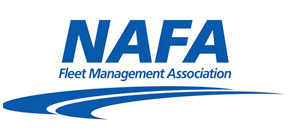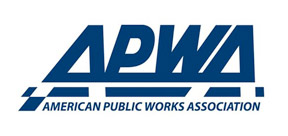Missoula updates its compost facility

Missoula, Mont., has been composting for some time now, but generous funding from the American Rescue Plan Act, in the amount of $4.7 million started a new phase. The city council approved an $8.6 million contract to update the city’s compost facility — Garden City Compost. When three project bids came in over the estimated $6.7 million, Western Municipal Construction worked with the city to decrease the bid as needed. State revolving funds were set to cover the remaining costs. Garden City has been working in a transitional facility since 2017 when it acquired EKO Compost; the improvement project will bring everything up to comply with state standards.
Some scheduled improvements include new composting bays, a concrete working area, mechanical and electrical controls, biofilters and stormwater runoff controls. Residents had been concerned about PFAS — widely used and long-lasting chemicals, also known as “forever chemicals.”
Jason Duffin, compost facility manager at the department of public works and mobility/resource recovery facility/Garden City Compost, said, “It began before the city of Missoula bought the compost facility from a private owner back in November 2016. Odor control and aeration were issues that needed to be handled better. The city’s goals were to keep costs down to dispose of treated biosolids locally and put them to a beneficial reuse while improving the facilities infrastructure. We needed to improve the composting process while updating to local DEQ regulations of composting on impervious surfaces to collect all leachates from the first stage of the process and keep any possible contamination from getting into the aquifer prior to the next stage of composting.”
Duffin added, “After receiving approval from the DEQ, we immediately changed over from negative aeration to positive aeration while beginning construction on what we called the ‘transitional facility.’ This made a vast difference in odors and our complaints went down drastically from people living and/or shopping in the area. We started doing research on securing funding to upgrade to a final facility design. Thankfully, we were able to grasp an opportunity and were granted $4.7 million in ARPA funding through the Montana Department of Natural Resources and Conservation back in 2021-22. That money needs to be spent by the end of 2025; with that we are required to provide matching funds, which we were approved for through the Montana Clean Water State Revolving Fund or SRF loan in the amount of $5.4 million dollars, for a project total of $10.1 million.”

With this funding, Missoula can continue diverting not just treated biosolids from the landfill but also other organic materials, such as yard waste, deconstructed lumber, sawdust, residential and commercial wasted food, and Biodegradable Products Institute-certified compostables, or materials that will break down completely.
Duffin continued, “We also take in soil from big and small projects, such as sod from building a garden or soil being hauled out of a construction site, and put that to use as well. While doing this, we are putting all the above to beneficial reuse like I mentioned earlier and also continue to fulfill our city’s adopted initiative called ZERO by Fifty Missoula.”
This initiative is in keeping with the goal of being Montana’s first zero-waste community, which Missoula is on track to do.
“The city of Missoula worked with a local sustainable nonprofit called Home Resource and many others to get this initiative adopted and are keeping it moving to this day,” he concluded.
As for the bays and biofilters, Duffin said, “Composting ‘bays’ are the way to differentiate what stage your compost is in. This way, we can monitor our temperatures to ensure proper breakdown of the organics while following all recommended and mandated composting practices, such as the Environmental Protection Agency 503 Regulations of the Process to Further Reduce Pathogens or PFRP. On a large scale, we need to do this for efficient monitoring of temperatures so we can take cooked material into the next stage of screening and curing.”
Duffin noted this is something that should be done even in backyard composting. “I typically recommend having two piles in the yard; one that you’ve added everything to and is actively breaking down and the second to put fresher product into. This helps you eliminate pathogens and break down weed seeds effectively, while ensuring that the compost you are using is healthy for your soil and growing needs.”
Duffin then explained, “Biofilters are used to filter pollutants from air, water and other similar applications using a biological process. In composting, we use chipped wood waste and moisture to create an environment for the appropriate microorganisms to capture and break down any volatile organic compounds (VOCs) that are captured during the first stage of the composting process. This is present anytime you are using aeration for composting.”
Two types of aerations are used. He said, “Our current system is positive aeration, where we are blowing air into the piles. This means that here, we are piling already broken down compost onto the top of the pile to capture the VOCs. We are using front-end loaders to do this, but you can use telehandler stacking conveyors as well, or fabricated covers that capture it and cycle it out through the leachate and back into the pile.”
This will change once the facility is finished. Duffin said, “Our new system will be negative aeration where we are sucking air into and through the piles. In doing this, we capture the air more effectively and increase our odor control by up to 70% more while also collecting the moisture or leachate and sending that back over to the treatment plant for further processing.”
As for the transitional facility, Duffin explained, “The transitional space was built after municipal ownership. We will leave a portion of it there just in case we need it for overflow, also for testing other composting feedstocks prior to incorporating into our process. The facility we are building now is our final facility, and from looking at past intake, we project being able to handle growth for at least the next 10 years. We do have room to expand from there, depending on growth in our community and sustainability over the next five years, so we can plan accordingly.”

Duffin noted, “So far, the public response has been positive. People have been very impressed with city ownership of the composting facility, having been able to see all the improvements here, especially the odor and cleanliness through organization. We are very transparent here and give tours all the time to anyone who wants one, including residents, local nonprofit organizations, all educational ages and fields, other facilities and other municipalities.
“Like I mentioned earlier, the city of Missoula is working on the ZERO by Fifty initiative with the community. At the end of the day, my personal dream is to have an interactive area here for touring with gardens and such, showing what we here at the resource recovery facility do with everything that goes down the drain and how it is put to beneficial reuse. Hopefully, at some point, we will be doing presentations in classes and have an interactive tour guide on our website, but all that is in the future.”
Duffin would like to see other cities composting, too. He recommends involving local communities and working with the local landfill, if they are open to helping divert green waste to a composting operation. If municipalities can work together with everyone impacted and prove that this is currently the best way to provide a better future for generations to come and do it safely following the science while keeping costs down for transportation and disposal of anything reusable, it will benefit everyone involved.
“Cities should be aware that the composting process produces odor, and it is difficult to completely eliminate it,” he cautioned. It’s a manageable issue, though. “Some cities have provided buckets and other needed materials in the same way that recycling bins have been furnished. But really, it’s boots on the ground. Showcase that this is positive and making a difference. Keep people involved. Find ways to do this, and keep it financially viable while showing that you are doing so. Make sure to be transparent with the positives and negatives.”
The product resulting from composting is also extremely beneficial. Duffin said, “We actively sell our product to multiple outlets. We do sell in bulk here to anyone that would like to purchase it, like reclamation projects, nurseries, golf courses — the possibilities are endless. We donate to local nonprofits to help our community. With the composting facility, we are able to help keep not just rate payer fees down for wastewater but also taxpayer costs as well by selling to schools and other departments within our city for lower costs of application, while amending soils to a healthier condition.”
Duffin circled back to transparency, noting, “We are actively providing information on our websites and here at our facility to our consumers about PFAS or forever chemicals. We have signage being made and cards for our receipts for purchasing customers that we know there is a risk of PFAS contamination and we don’t know what that risk fully is yet in a soil application. As you may already know, PFAS are ubiquitous in our environment, literally in our rainwater and dust. It is on most products we use day to day, such as food packaging, clothing, makeup … the list goes on and on.”
Duffin shared that the EPA just approved a testing method last year for solids that is supposed to be more consistent than previous versions. He added. “Here at our facility, we have been sampling since 2022 and are below application standards for biosolids around the country, but the science is still developing. The uptake into plants is still being studied. Thankfully, here in Missoula, we don’t have the industrial, heavy commercial pollutant contributing factors, such as in locations like Maine. We recently sampled our incoming feedstocks and are awaiting the results to determine where potential pollutants are coming from.”
PFAS detection is occurring in food packaging during transport, some non-BPI-certified compostable packaging and in herbicide residue like what is used on trees and lawns.
Duffin shared one final, serious thought. “Wastewater facilities are passive receivers, and we are getting PFAS contaminants from all commercial and residential wastewater coming in. Some of the PFAS products are being banned by local and national authorities; however, until we get rid of these, our populace is just going to keep contributing PFAS to the system in a never-ending cycle. Hopefully, the ban of PFAS usage increases at a greater speed, with more awareness, current ongoing research and transparency by everyone. The more we know as a community, the more we can stop the contamination as a team.”
Next Article: Miami Beach public works wins awards for infrastructure excellence


